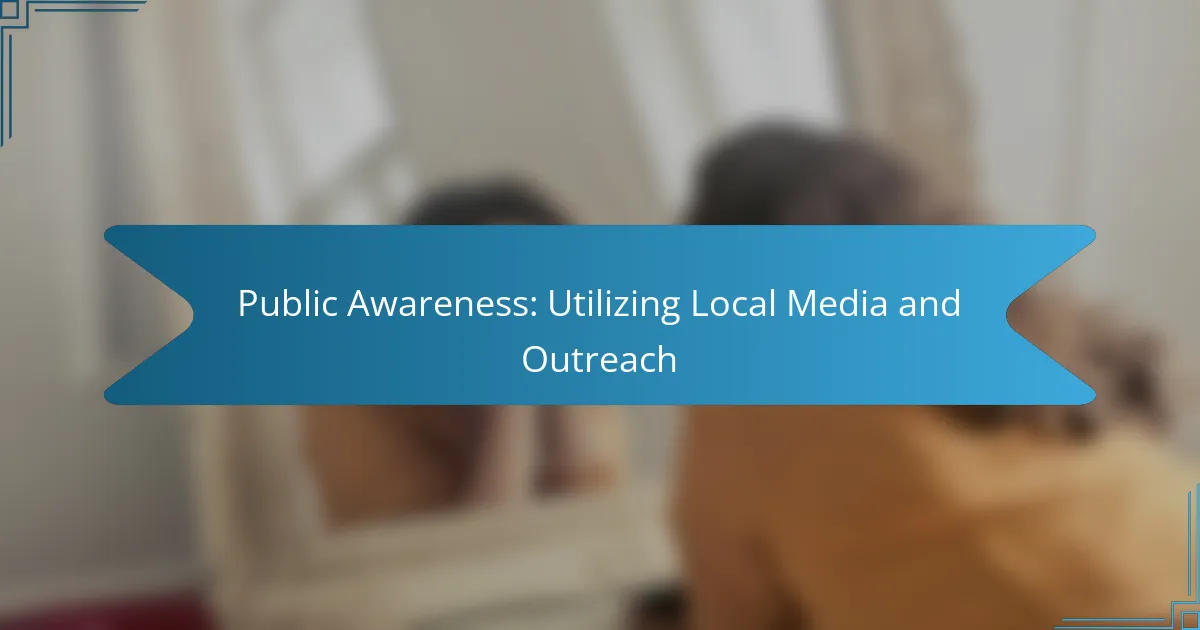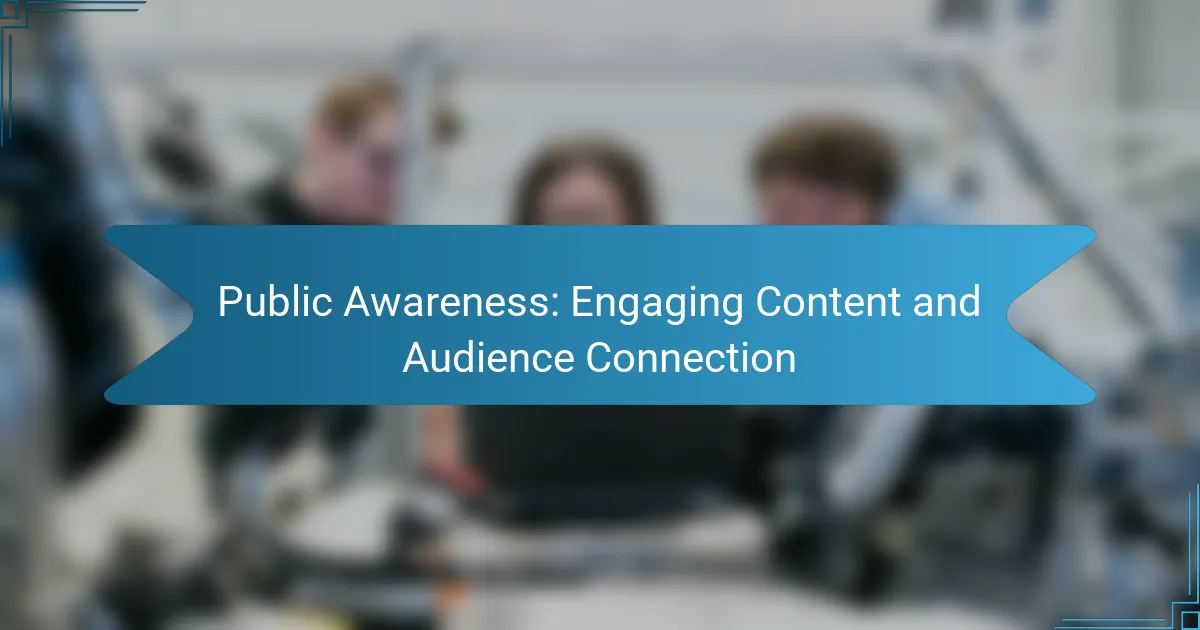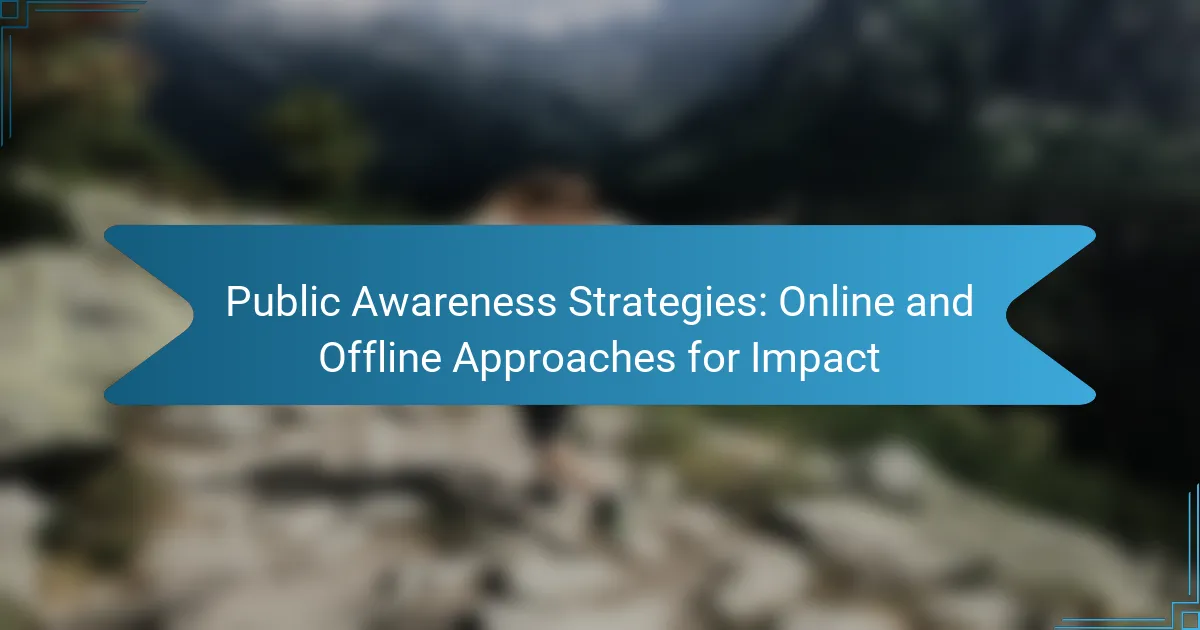Local media serves as a vital tool for enhancing public awareness by delivering timely and relevant information directly to communities. By strategically utilizing local newspapers, radio stations, and community television, organizations can effectively engage their target audiences and promote informed citizenry. Combining these media efforts with outreach strategies such as social media and community events can further amplify awareness and participation.
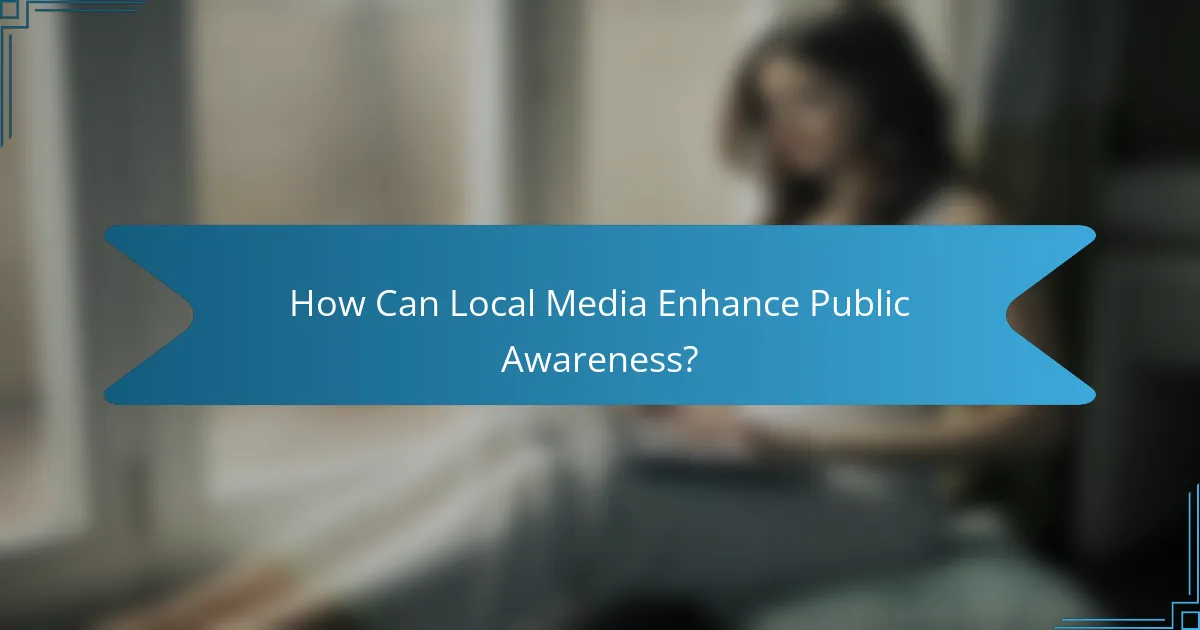
How Can Local Media Enhance Public Awareness?
Local media plays a crucial role in enhancing public awareness by providing timely and relevant information to communities. By leveraging local news outlets, organizations can effectively reach their target audiences and foster informed citizenry.
Increased Reach
Local media outlets, such as newspapers, radio stations, and community websites, have established audiences that trust their content. Utilizing these platforms allows organizations to disseminate information widely within specific geographic areas, ensuring that messages reach those who need them most.
For example, a public health initiative can partner with local radio stations to broadcast health tips and updates, reaching thousands of listeners in a matter of minutes. This approach can significantly amplify the impact of awareness campaigns.
Targeted Messaging
Local media enables organizations to tailor their messages to specific demographics or community interests. By understanding the unique characteristics of the audience, messages can be crafted to resonate more deeply, increasing the likelihood of engagement.
For instance, a campaign focused on environmental conservation can highlight local success stories and involve community leaders, making the message more relatable and actionable for residents. This targeted approach can lead to higher participation rates in community programs.
Community Engagement
Engaging with local media fosters a sense of community involvement and ownership. When organizations collaborate with local journalists, they can create opportunities for public discussions, interviews, and events that encourage community participation.
Hosting town hall meetings or workshops promoted through local media can help gather feedback and ideas from residents, making them feel valued and heard. This two-way communication strengthens community ties and enhances the overall effectiveness of awareness initiatives.

What Outreach Strategies Are Effective?
Effective outreach strategies focus on engaging the community through various channels to raise awareness and drive participation. Utilizing a mix of social media, community events, and partnerships with local organizations can significantly enhance outreach efforts.
Social Media Campaigns
Social media campaigns are powerful tools for outreach, allowing organizations to reach a broad audience quickly. Platforms like Facebook, Instagram, and Twitter can be used to share information, promote events, and engage directly with the community.
To maximize impact, tailor content to each platform’s audience and utilize engaging visuals. Consider running targeted ads to reach specific demographics, which can be particularly effective in local outreach efforts.
Community Events
Hosting community events is an effective way to foster direct engagement and build relationships. These events can range from informational workshops to festivals, providing opportunities for face-to-face interaction and hands-on learning.
When planning events, consider the interests and needs of the local community. Offering free resources or activities can encourage attendance and participation, making the event more appealing.
Partnerships with Local Organizations
Forming partnerships with local organizations can amplify outreach efforts and expand reach. Collaborating with schools, nonprofits, and businesses can provide access to new audiences and resources.
Identify organizations that share similar goals and values, and explore ways to work together, such as co-hosting events or sharing promotional materials. This approach not only enhances credibility but also fosters a sense of community involvement.
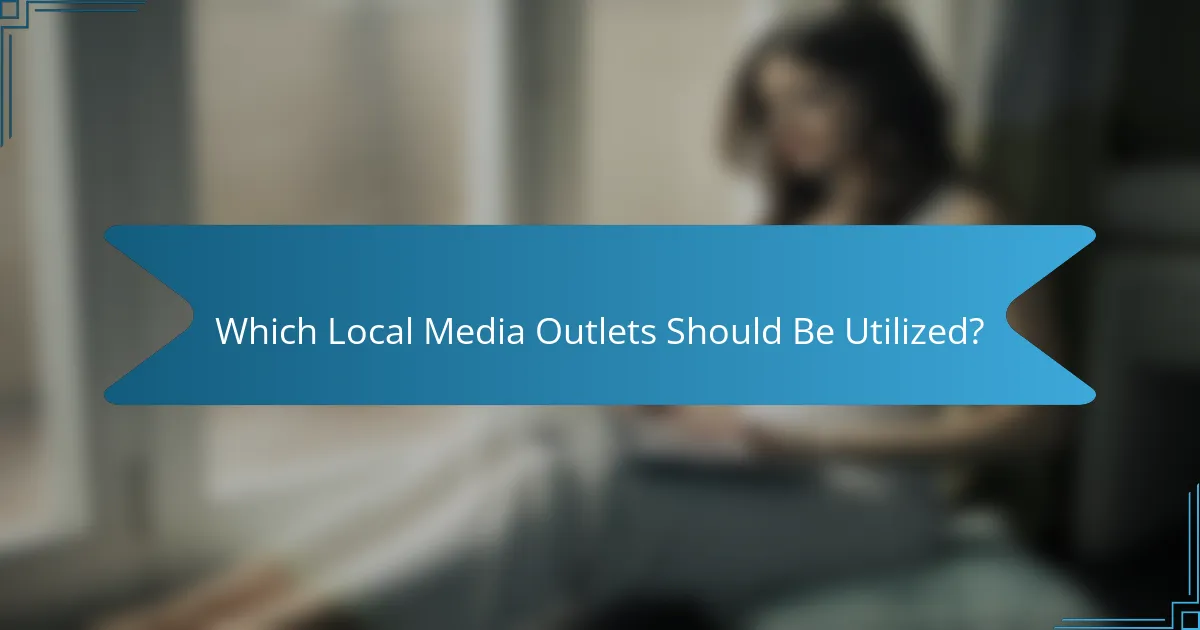
Which Local Media Outlets Should Be Utilized?
Utilizing local media outlets effectively enhances public awareness initiatives. Key outlets include local newspapers, radio stations, and community television, each serving distinct roles in outreach efforts.
Local Newspapers
Local newspapers are a vital resource for reaching community members with in-depth articles and advertisements. They often have established readerships that trust their reporting, making them ideal for disseminating important information.
Consider submitting press releases or opinion pieces to engage readers. Many newspapers also offer advertising options, which can be a cost-effective way to promote events or initiatives to a targeted audience.
Radio Stations
Radio stations provide immediate access to local audiences through news segments and talk shows. They can be particularly effective for reaching individuals who may not engage with print or online media.
Utilizing local radio for interviews or public service announcements can significantly enhance outreach. Consider partnering with stations for community events or sponsorships to increase visibility and engagement.
Community Television
Community television channels offer a platform for broadcasting local events, interviews, and educational programming. These channels often focus on community issues and can effectively reach diverse demographics.
Producing short segments or participating in local shows can help raise awareness about specific initiatives. Engaging with community television allows for visual storytelling, making messages more relatable and impactful.

What Are the Key Metrics for Measuring Success?
Key metrics for measuring success in public awareness initiatives include engagement rates, audience reach, and feedback from surveys. These metrics provide insights into how effectively local media and outreach efforts resonate with the community.
Engagement Rates
Engagement rates reflect how actively the audience interacts with your content. This can include likes, shares, comments, and participation in events. A higher engagement rate typically indicates that the audience finds the content relevant and compelling.
To measure engagement, track interactions across various platforms, such as social media and community forums. Aim for engagement rates of at least 5-10% for effective outreach, but this can vary based on the platform and audience size.
Audience Reach
Audience reach measures the total number of individuals exposed to your messages. This metric is crucial for understanding the breadth of your outreach efforts. Consider both direct reach, such as event attendance, and indirect reach through media impressions.
Utilize analytics tools to assess reach across different channels, including local newspapers, radio broadcasts, and social media. Aiming for a reach that encompasses at least 20-30% of your target demographic can indicate a successful campaign.
Feedback and Surveys
Collecting feedback through surveys is essential for gauging public perception and understanding the effectiveness of your outreach. Surveys can provide qualitative insights into how the audience feels about your initiatives and what improvements can be made.
Distribute surveys both online and offline to capture a diverse range of responses. Aim for a response rate of around 10-15% for meaningful data, and consider using open-ended questions to gather detailed feedback that can inform future strategies.
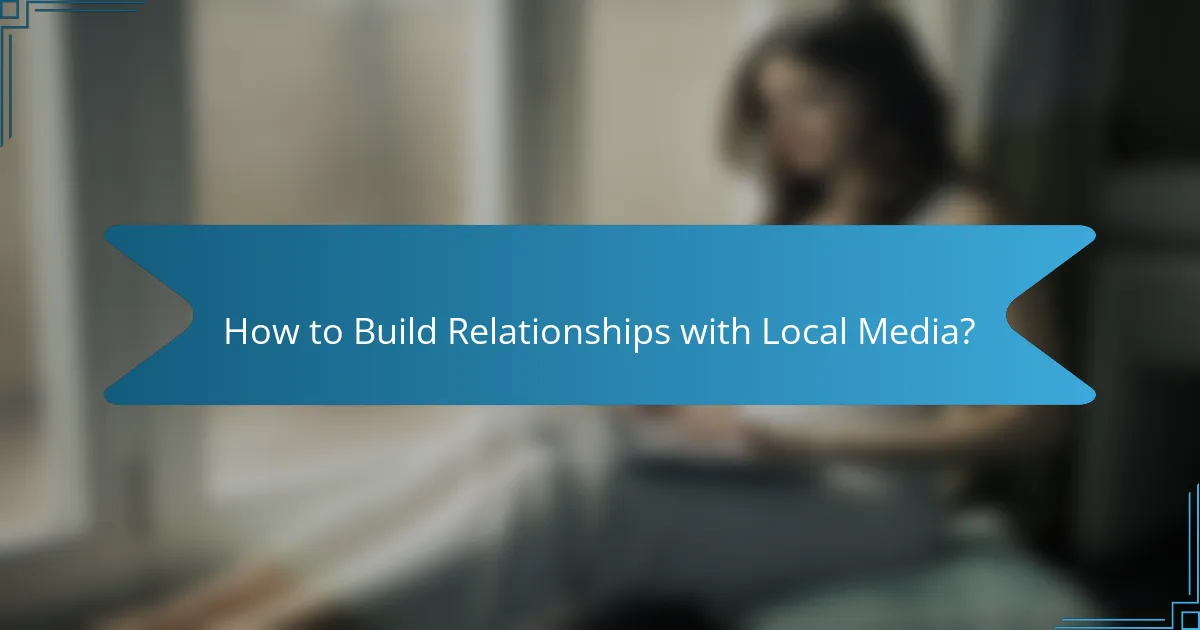
How to Build Relationships with Local Media?
Building relationships with local media involves consistent engagement and providing valuable information that aligns with their interests. By establishing trust and open lines of communication, organizations can effectively promote their messages and initiatives.
Regular Communication
Regular communication with local media is crucial for maintaining visibility and fostering relationships. This can include sending updates about your organization, inviting journalists to events, or simply checking in to share relevant news. Aim for a balance between being informative and respectful of their time.
Consider setting a schedule for outreach, such as monthly newsletters or quarterly updates, to keep your organization top-of-mind without overwhelming reporters. Personalizing your communications can also enhance engagement.
Press Releases
Press releases are formal announcements that provide journalists with essential information about your organization’s newsworthy events or initiatives. Ensure your press releases are concise, well-structured, and include the who, what, when, where, and why. A strong headline and a compelling lead paragraph can grab attention.
When distributing press releases, target local media outlets that align with your audience. Follow up with key journalists to gauge interest and answer any questions they may have, but avoid being overly persistent.
Media Kits
A media kit is a comprehensive package of information about your organization, designed to make it easy for journalists to cover your story. It typically includes background information, key facts, high-resolution images, and contact details. A well-prepared media kit can save time for reporters and improve the chances of coverage.
Consider creating both digital and physical versions of your media kit. Ensure that the content is regularly updated to reflect the latest developments in your organization. Providing easy access to your media kit on your website can also facilitate outreach efforts.

What Challenges Might Arise in Local Outreach?
Local outreach can encounter several challenges, including resource limitations, community engagement issues, and varying levels of media access. Understanding these obstacles is crucial for developing effective strategies to enhance public awareness.
Resource Limitations
Resource limitations often hinder local outreach efforts, affecting both financial and human resources. Many organizations operate on tight budgets, which can restrict the scope and frequency of outreach activities.
To maximize impact, prioritize outreach initiatives that require minimal funding yet yield significant community engagement. For instance, leveraging social media platforms can be a cost-effective way to reach a broader audience without substantial investment.
Consider collaborating with local businesses or nonprofits for shared resources. This can include co-hosting events or pooling funds for advertising, which can help alleviate individual financial burdens while enhancing outreach effectiveness.
